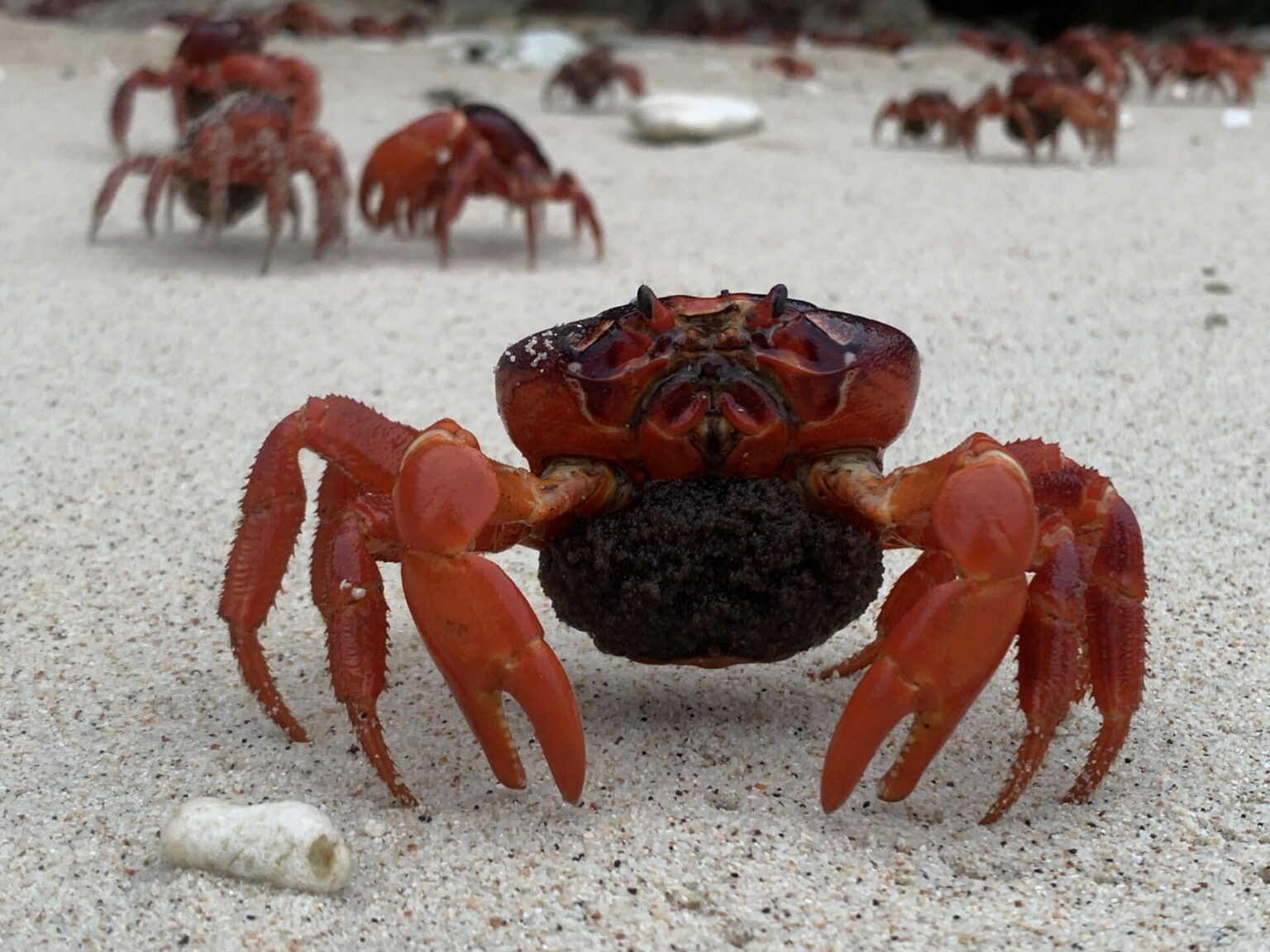Protecting the Red Crabs of Christmas Island
Christmas Island Australia has to be one of the most unique diving and land experiences in the world. Rising from the depths of the Indian Ocean, only 350km south of Java, is one of Australia’s most northern outposts.
Often dubbed as Australia’s Galapagos, this hidden gem boasts a relatively high number of endemic species for its size.
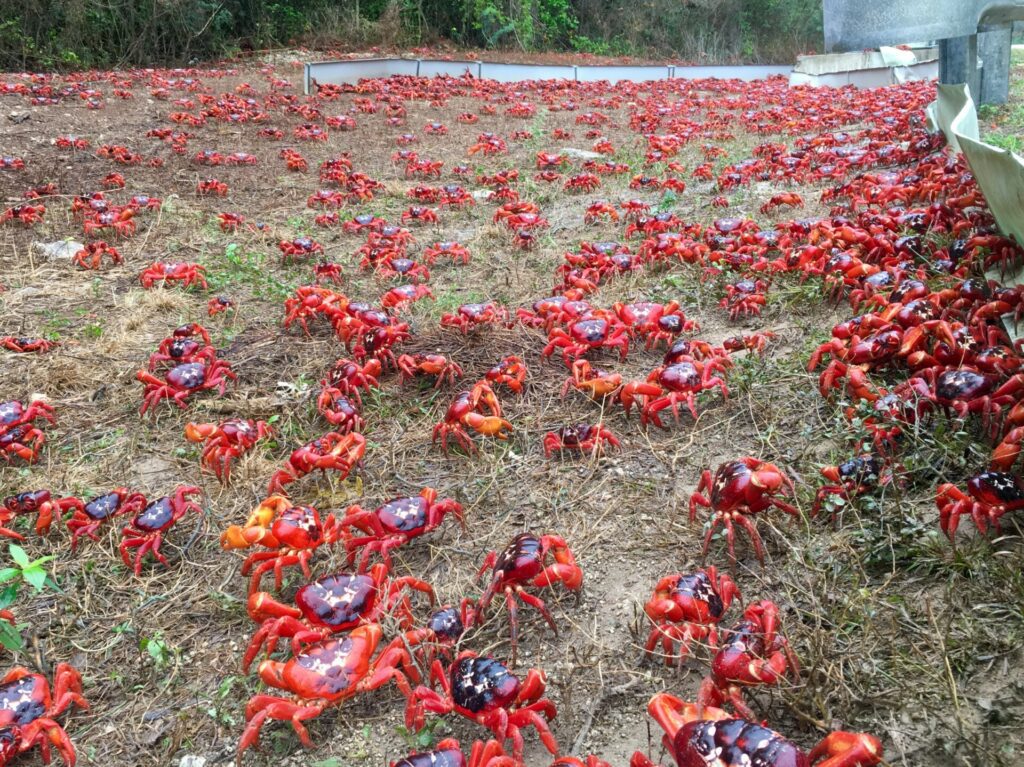
David Attenborough recollects it was one of his greatest TV moments, being on the island as during the Annual Red Crab migration.
Each year, as the monsoon arrives (usually October – December) millions of the red crabs appear out of their burrows, using the rains to stay hydrated whilst making their way to the lower terraces of the island for breeding.
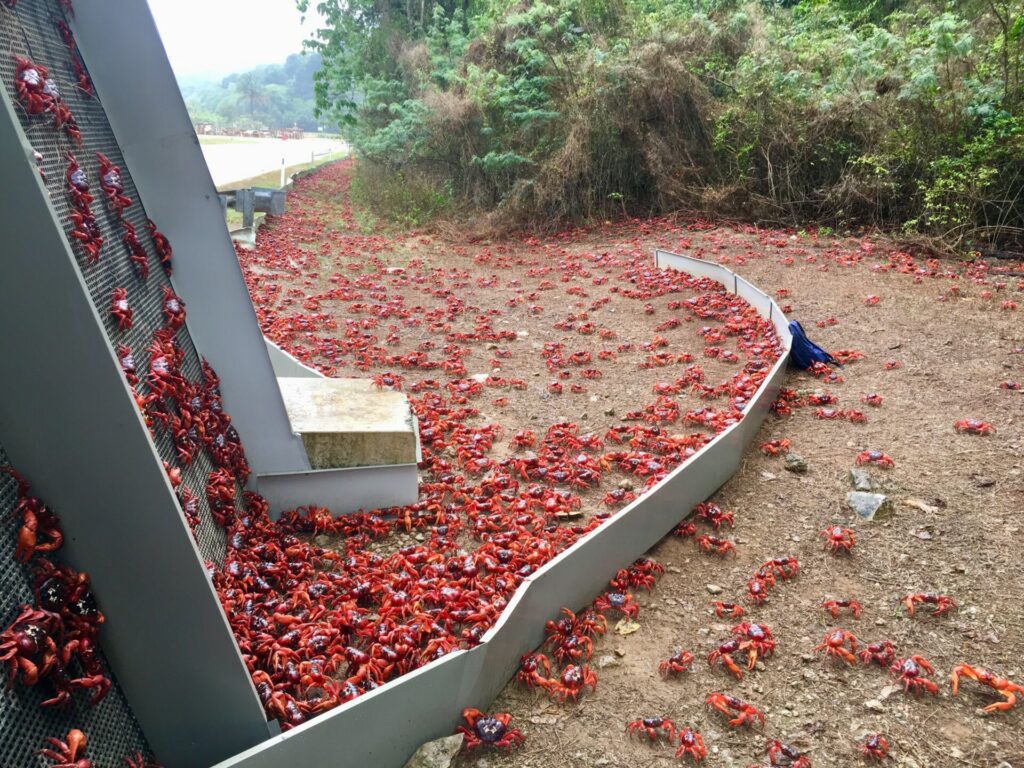
The jungle floor fills with crabs and the roads become red. It is truly a spectacle for all who visit.
Once the crabs make their way to the coast for a dip in the sea, many divers can witness this spectacle from the boats. These bonus views of the red crab activity can only be witnessed from the dive vessels in close proximity to the cliffs, where the nearby fringing coral reef hosts most of the spectacular dive sites.
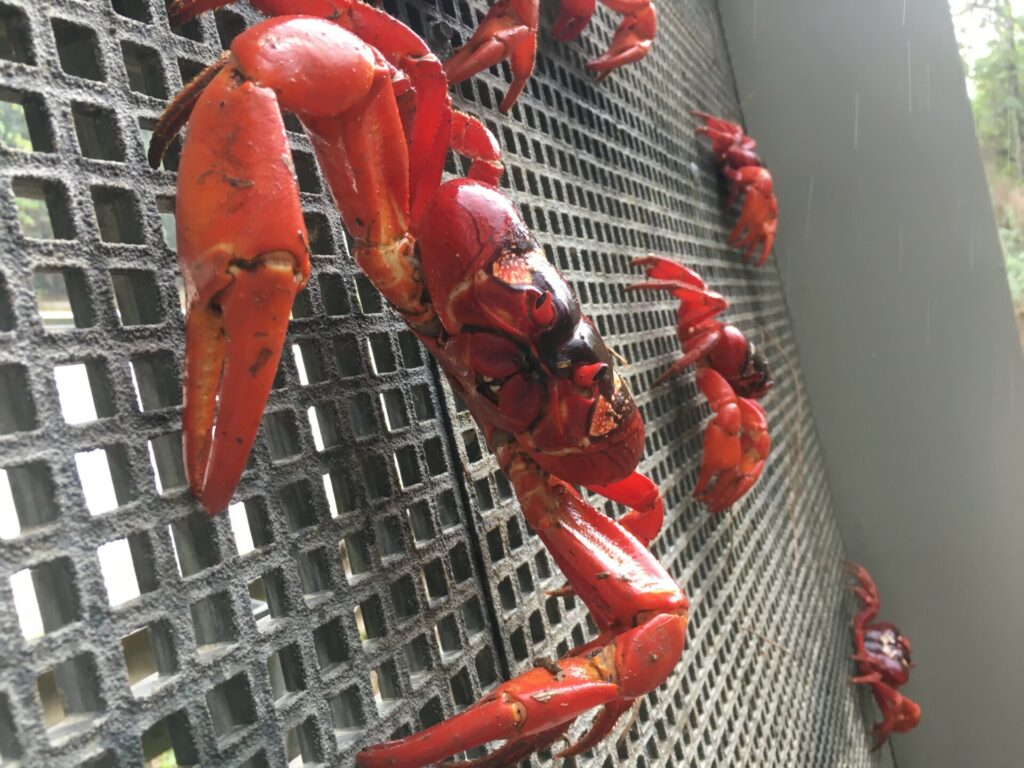
100’s of crabs clinging to the cliff, all waiting for the spray of the sea to refresh them from their arduous journey, using the essential ocean salts and minerals to replenish their depleted stores. The sheer numbers of crabs participating in this activity is only possible due to the road management and infrastructure in place to protect them during their journey.
Crab crossings installed in the road, a crab bridge, road closures and raking teams all contribute to ensure the crabs can successfully complete the migration part of their breeding cycle.
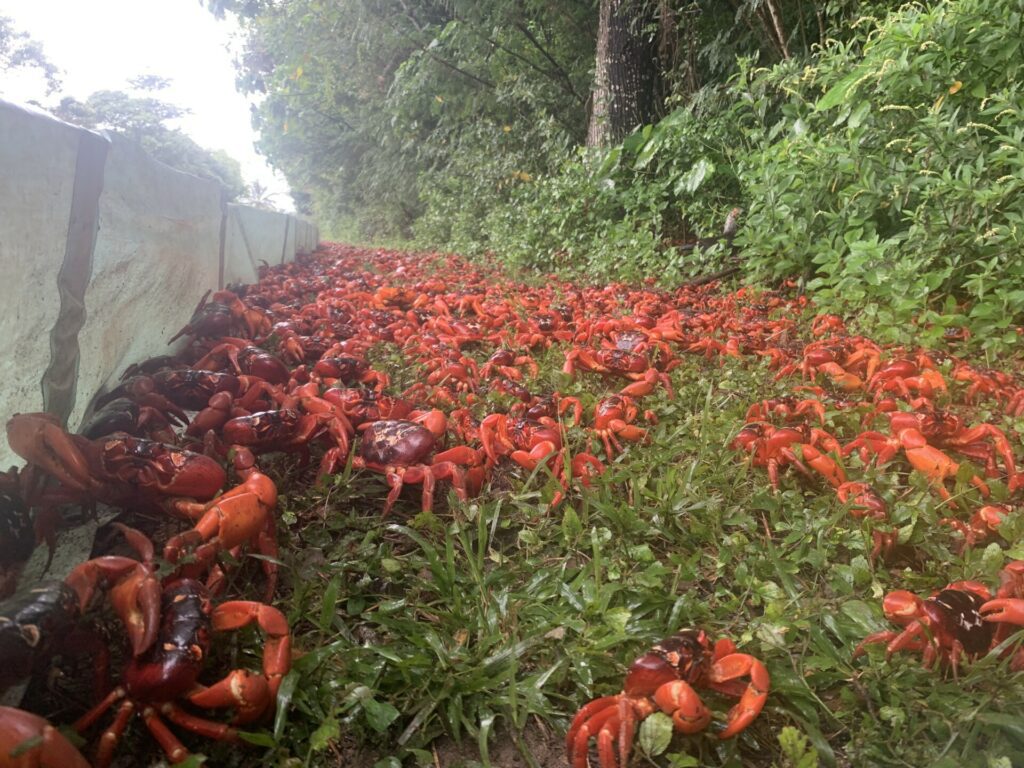
Once the crabs have dipped in the sea, they find a mate. When the males have completed their contribution, they begin to make their way home, leaving the female to look after her (up to) 450,000 eggs for the next couple of weeks.
When the moon is in the right phase, and the pre-daybreak tide is right, the females dance to release their eggs to the ocean across a couple of mornings.
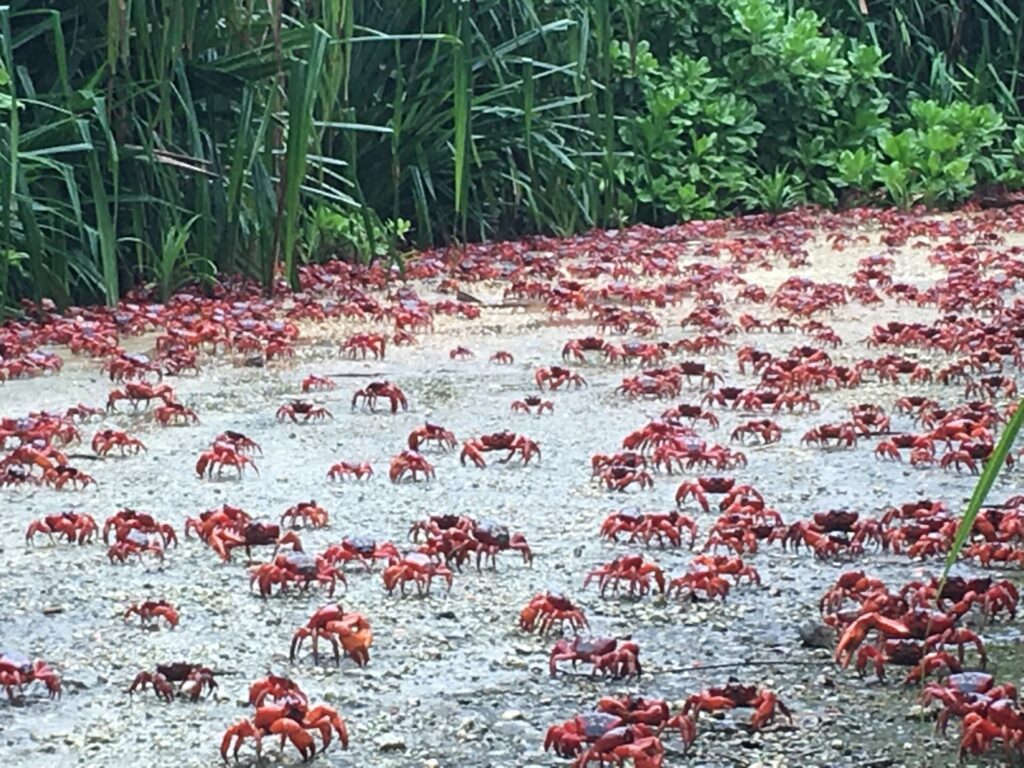
It is thought that the Whalesharks and Mantas pick up on the pheromones from either the adults or spawn, and swoop past the islands’ 80km coastline, feasting on the nutritious crab larvae.
Those surviving the perilous ocean start to life, return some 3 weeks later at various locations around the island and head to their new home in the jungle, laying dormant for a few years before joining the migration.
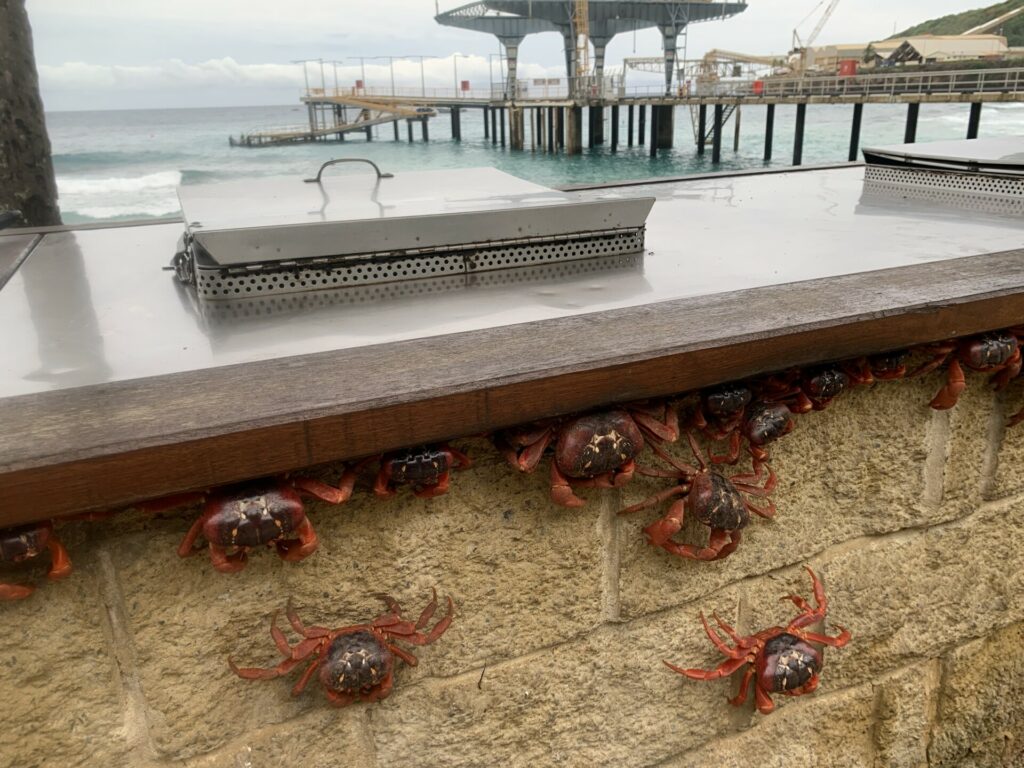
Whilst a monsoon season usually keeps other tourists away, scuba divers are treated to warm, clear waters with an abundance of pelagics – and the true spectacle of Christmas Island reveals itself.
For visitors, the Red Crab migration can be a challenging time – road closures, timing outings to reduce carnage at peak migration locations, but the sense of adventure reveals itself to all the scuba divers who visit.
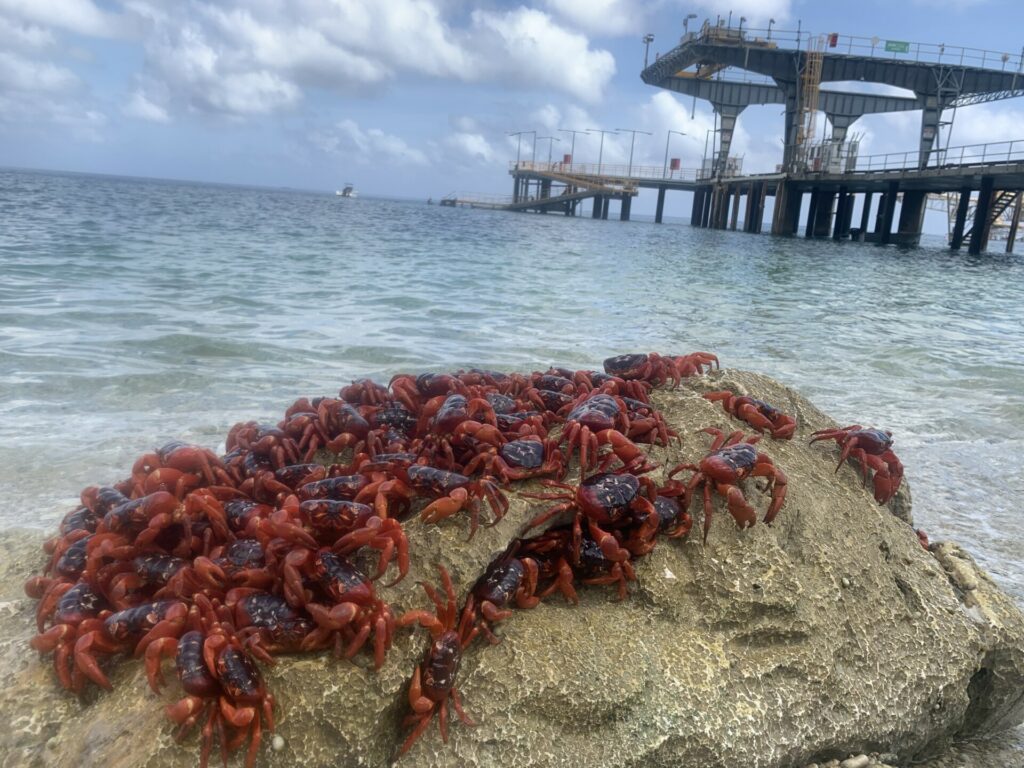
Not many have used garden rakes to clear the roads before shore & boat diving, few have used leaf blowers to drive down roads closed to the public to get to the boat jetty. It becomes a highlight of their experience on Christmas Island – knowing that in their own small ways they’ve contributed to conserving a keystone species that will continue to draw people from all corners of the planet for many decades to come.
Once in the water, witnessing one of the greatest migrations known, you can also relive your earliest childhood memories of watching David Attenborough.
